Sights of Medina
The Prophet’s Mosque in Medina – A Place of Spiritual and Architectural Beauty
The Prophet’s Mosque (al-Masjid al-Nabawī) in Medina is one of the holiest sites in Islam after the Kaaba in Makkah, and a symbol of spiritual connection for Muslims around the world. It was built in the year 622 by the Prophet Muhammad (peace be upon him) together with his companions. Since then, it has remained a center of worship, knowledge, and community.
The original mosque was a simple structure made of clay bricks and palm leaves. Over the centuries, it underwent many renovations and expansions under various rulers. The Abbasids, Ottomans, and the modern Saudi leadership have all made significant contributions to its current magnificent form. Today, it spans over 400,000 square meters and can accommodate more than one million worshippers.
One of its most iconic architectural features is the Green Dome, which stands above the Prophet Muhammad’s (peace be upon him) grave, where the caliphs Abu Bakr (may Allah be pleased with him) and Umar (may Allah be pleased with him) are also buried. The mosque is further adorned with ten towering minarets (each 106 meters tall), beautiful columns decorated with Arabic calligraphy, and impressive retractable umbrellas that provide shade for worshippers in the courtyard.
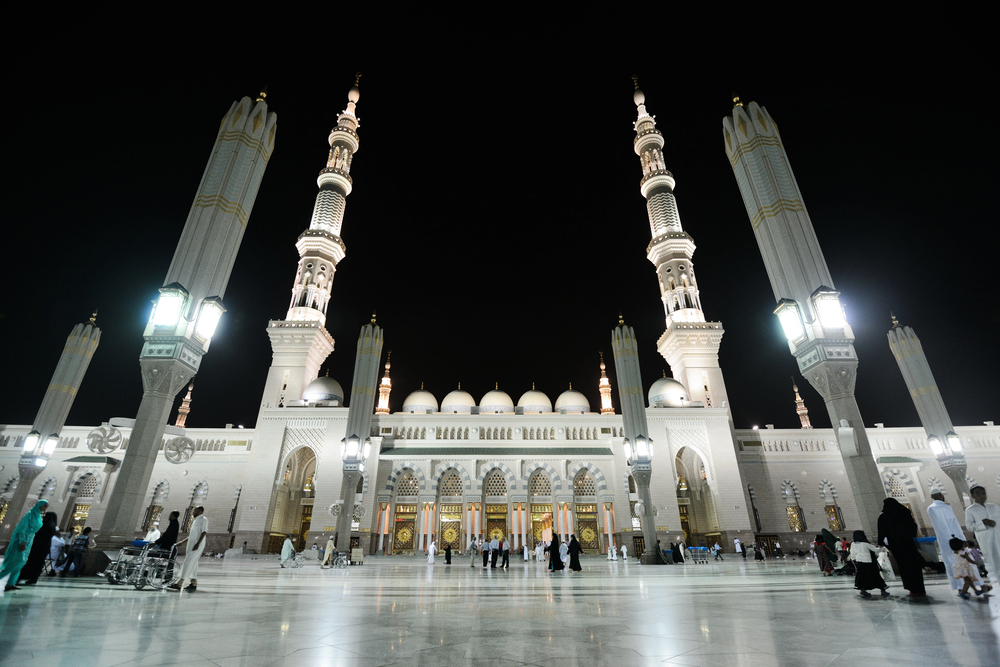
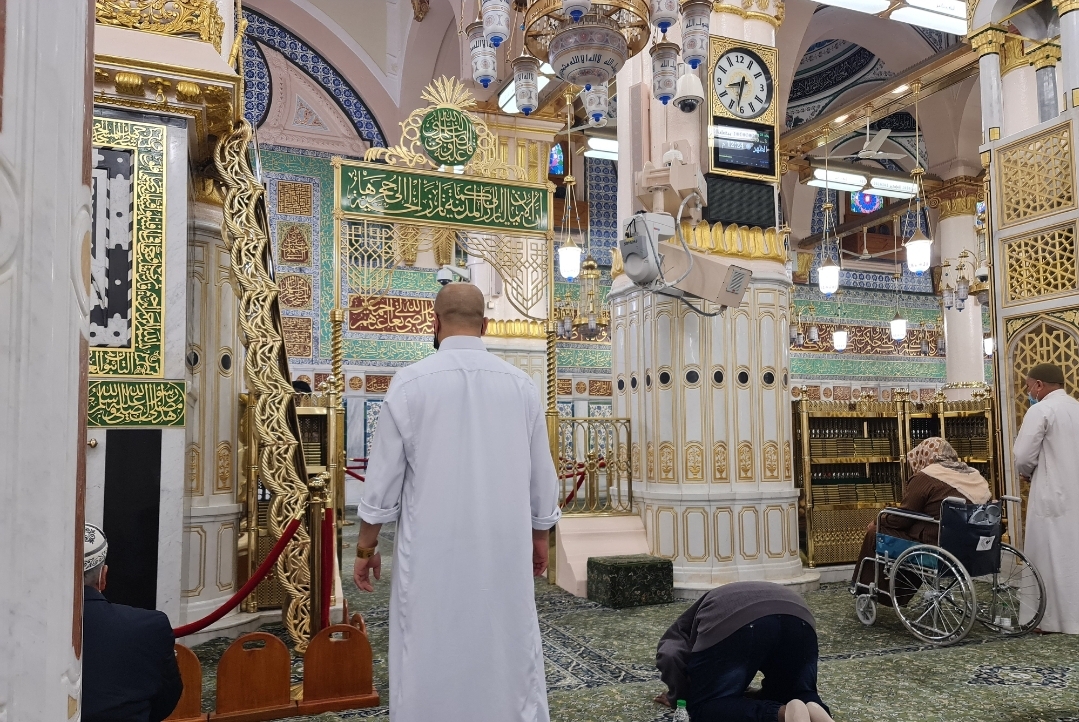
Rawdah (Riyad ul-Jannah) – A Garden of Paradise in the Mosque of the Prophet Muhammad (peace be upon him)
Rawdah, also known as “Riyad ul-Jannah” (The Garden of Paradise), is one of the most revered and honored places in Islam. It is located within the Prophet’s Mosque in Medina, between the blessed grave of the Prophet Muhammad (peace be upon him) and his pulpit. According to authentic hadiths, prayers and supplications offered in this sacred area hold special spiritual value.
The Prophet Muhammad (peace be upon him) said: “The space between my house and my pulpit is one of the gardens of Paradise.” This hadith highlights the spiritual significance of Rawdah and explains why millions of believers strive to pray and spend even a few moments in this blessed space.
Rawdah is easily recognized by its olive-green carpet, which sets it apart from the rest of the mosque. Nearby is the Green Dome, under which the Prophet Muhammad (peace be upon him) is buried alongside Abu Bakr (may Allah be pleased with him) and Umar (may Allah be pleased with him). Because of its sacredness and limited space, entering Rawdah often requires patience—but the reward and spiritual connection it offers make it an essential destination for every visitor to Medina.
The Honored Grave of Prophet Muhammad (peace be upon him) – A Lasting Trust of Islam
At the heart of the Prophet’s Mosque in Medina lies the honored grave of the Prophet Muhammad (peace be upon him), alongside the graves of Abu Bakr as-Siddiq and Umar ibn al-Khattab (may Allah be pleased with them). Covered by the iconic Green Dome, this sacred site – along with the Holy Kaaba in Makkah – is one of the most visited and revered places in the entire Islamic world.
After the Prophet’s (peace be upon him) passing in the year 632 CE, his blessed body was buried in the room of his beloved wife Aisha (may Allah be pleased with her), where he had lived. Later, his two closest companions and the first caliphs of Islam, Abu Bakr and Umar (may Allah be pleased with them), were also laid to rest beside him.
This sacred place symbolizes the deep love, reverence, and connection that Muslims feel toward God’s Final Messenger. Believers from all over the world come to send their salutations (salaam) to the Prophet (peace be upon him) and his noble companions, praying to Allah (Subhanahu Wa Ta’ala) for blessings and spiritual elevation. Because of its great significance, visitors are encouraged to approach with respect, humility, and sincere devotion, mindful of the privilege of standing near one of the holiest places in Islam.
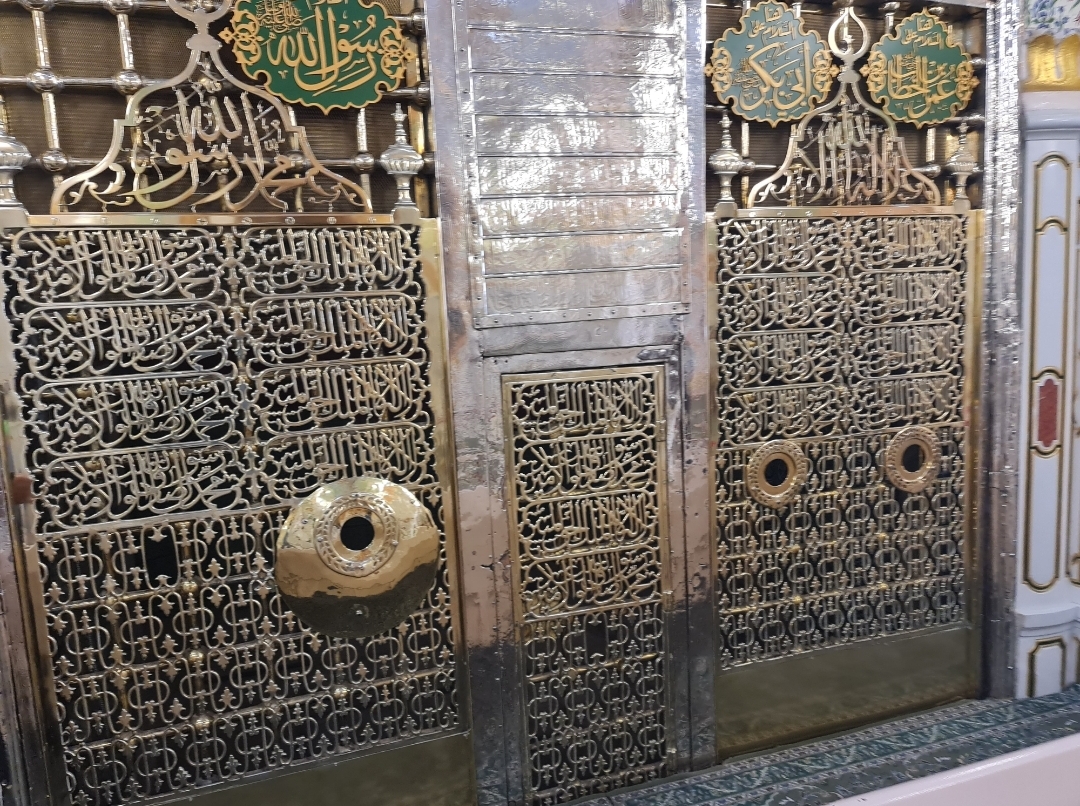
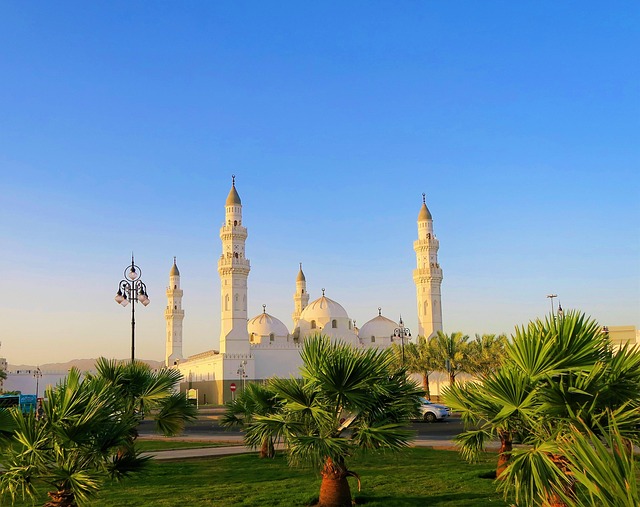
Quba Mosque – The First Mosque in Islam
Quba Mosque (Masjid Quba) in Medina holds a special place in Islamic history as it is considered the first mosque built by the Prophet Muhammad (peace be upon him). It was constructed in 622 CE, immediately after the Prophet’s (peace be upon him) arrival in the Quba area during the Hijra from Makkah to Medina.
Originally, the mosque was a simple structure made of clay bricks and palm trunks, but it was later expanded and beautified under various Islamic rulers. Today, it is one of the most visited mosques in Medina, where believers come to pray, following the practice of the Prophet Muhammad (peace be upon him), who regularly prayed there.
According to authentic hadiths, performing two rak’ahs of prayer in this mosque brings the reward equivalent to performing Umrah. Due to its historical and spiritual significance, Masjid Quba remains a symbol of purity, faith, and the first Muslim community established after the Hijra.
Mount Uhud in Medina – Witness to Historic Events
Mount Uhud, located north of Medina, is one of the most important historical sites in Islamic tradition. This sacred mountain was the site of the Battle of Uhud in 625 CE, where the Muslims, led by the Prophet Muhammad (peace be upon him), defended Medina against the Quraysh.
The Battle of Uhud remains a significant moment in Islamic history, offering important lessons about patience, discipline, and faith. Although the Muslims did not achieve a complete victory, the battle strengthened the community and solidified their determination to spread Islam. Seventy companions attained martyrdom on this site, including the Prophet’s (peace be upon him) beloved uncle Hamza ibn Abdul-Muttalib (may Allah be pleased with him), whose grave is still near the mountain.
Today, Mount Uhud continues to attract visitors from around the world who come to honor the martyrs and experience the historical significance of this place. Its reddish tones and rocky landscape serve as a reminder of the difficult yet glorious moments from early Islamic history.
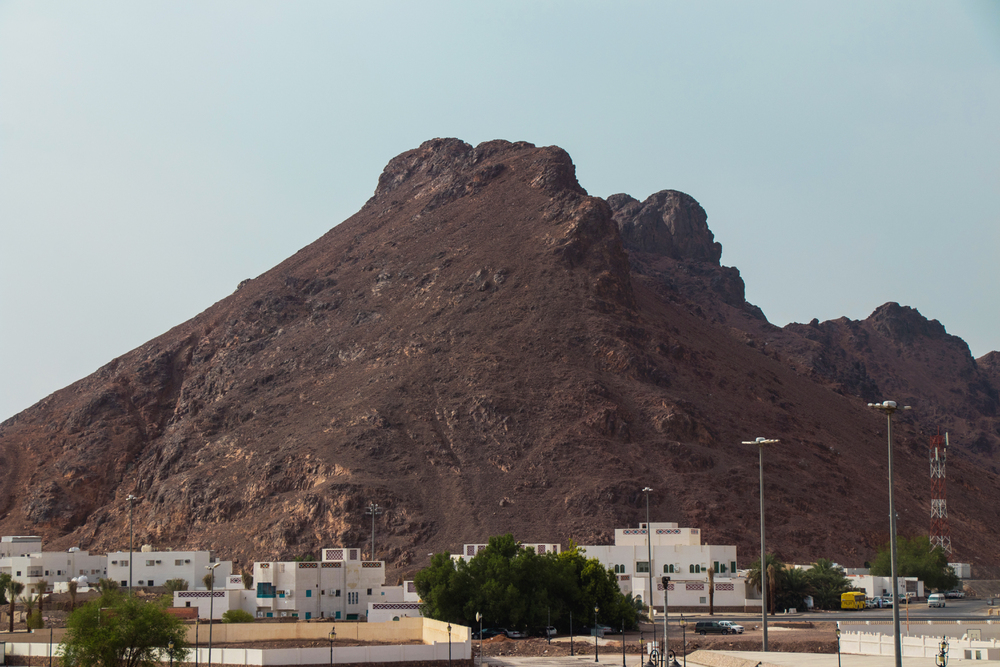
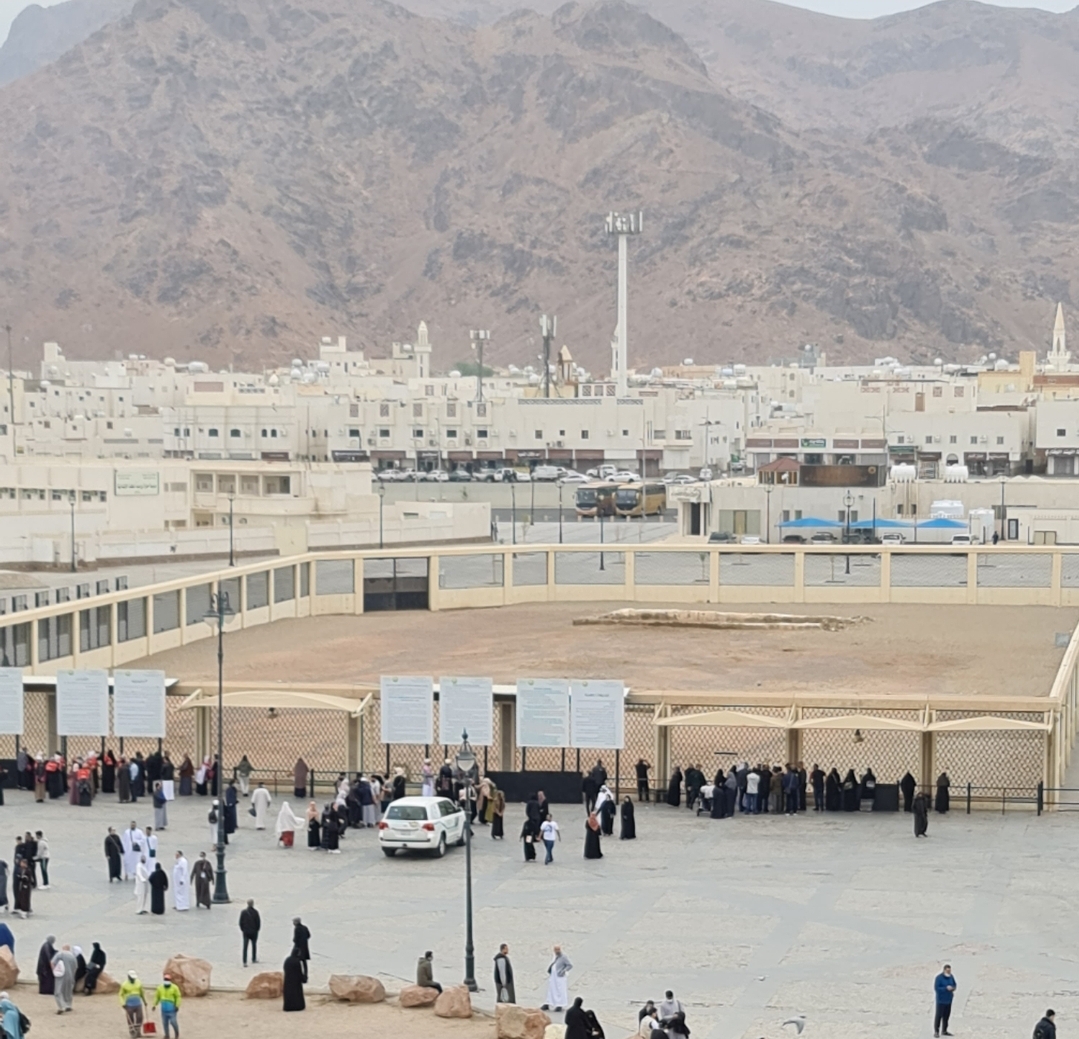
Uhud Martyrs’ Cemetery – The Resting Place of the Heroes of Islam
The Martyrs’ Cemetery at Uhud, known as the Makbaret al-Shuheda Uhud, is one of the most important historical sites in Medina. Here rest the martyrs of the Battle of Uhud, which took place in 625. (3rd AD) between the Muslims and the Quraysh army.
The Battle of Uhud was a pivotal moment in early Islamic history, where the Muslims bravely faced a superior enemy. Although they did not achieve a complete victory, their sacrifice left a profound impact. Seventy martyrs are buried at this sacred site, including one of the most beloved companions of the Prophet Muhammad (peace be upon him) Hamza ibn Abdul-Muttalib (may Allah be pleased with him), the Prophet’s uncle, known as the “Leader of all Martyrs.”
Many historical narrations emphasize the great significance of this place, and the Prophet Muhammad (peace be upon him) frequently visited the Uhud cemetery and prayed for its martyrs. Today, believers from around the world come to pay tribute to these brave fighters who gave their lives defending Islam. Makbarat al-Shuhada Uhud remains a symbol of sacrifice, faith, and devotion to Allah’s (Subhanahu Wa Ta’ala) path, reminding Muslims of the values of courage and patience.
Medina Cemetery – Jannat al-Baqī, the Garden of Peace and Tranquility
The Medina Cemetery, known as Jannat al-Baqī, is one of the oldest and most important cemeteries in Islam. It is located near the Prophet’s Mosque and is considered a sacred place because many companions, members of the family of the Prophet Muhammad (peace be upon him) and devout followers of Islam are buried there.
This cemetery dates back to the time of the Prophet Muhammad (peace be upon him) who personally selected this location for the burial of his companions and those who passed away in Medina. The first person buried here was Osman ibn Maz’un (may Allah be pleased with him), one of the earliest Muslims. Over the centuries, many significant figures have been buried in al-Baqi‘, including the Prophet’s daughters (may Allah be pleased with them), his young son Ibrahim (may Allah be pleased with him), his wives Umm Salama and Aisha (may Allah be pleased with them), and notable companions such as Uthman ibn Affan, the third caliph in Islam (may Allah be pleased with them).
Jannat al-Baqī remains a symbol of Islamic history and spiritual connection for Muslims worldwide. Today, believers visit this cemetery to pay respects to the great figures of Islam and to reflect on the transience of this worldly life.
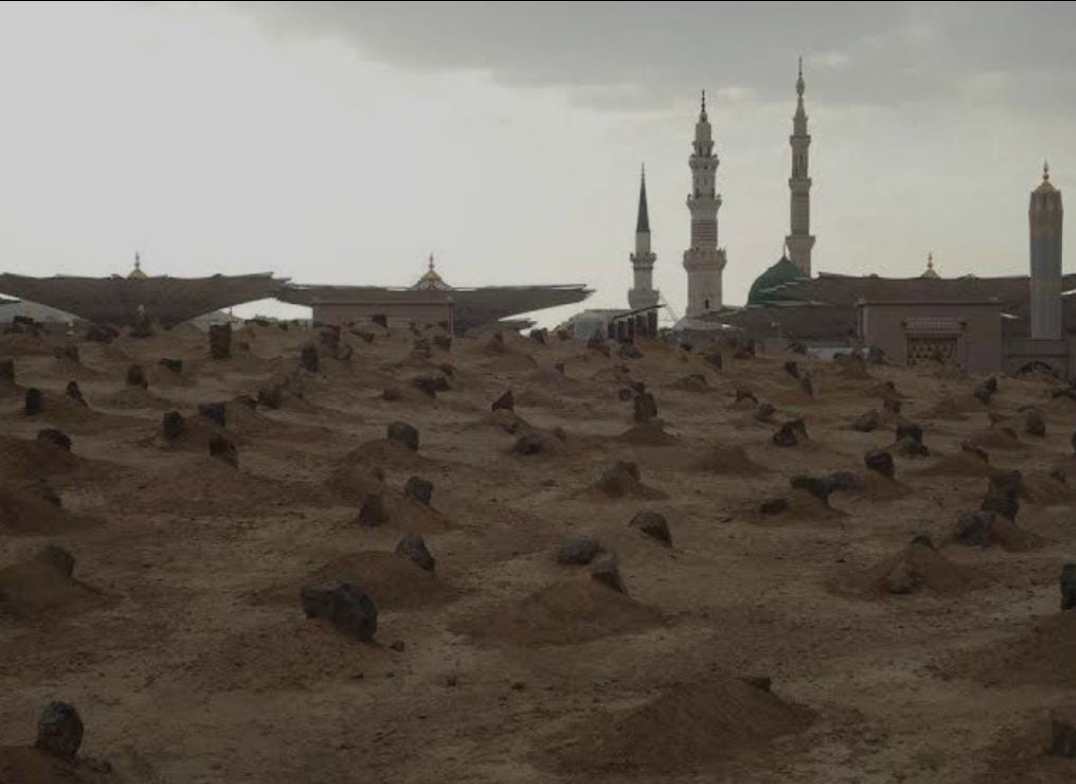
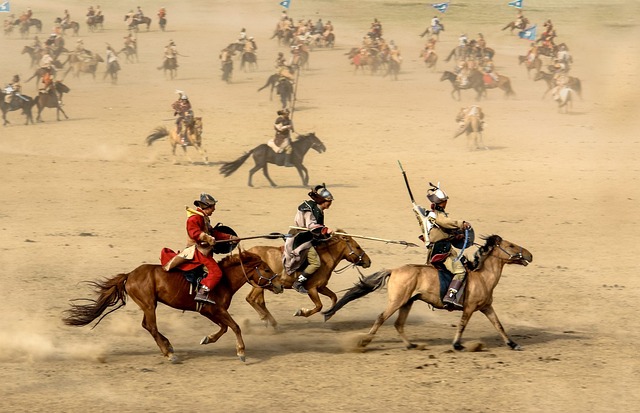
The Battle of the Trench – The Decisive Defense of Medina
The Battle of the Trench (Ghazwat al-Khandaq), also known as the “Battle of the Confederates,” took place in 627 CE (5 AH) and was one of the most significant events in early Islamic history. The Muslims, led by the Prophet Muhammad (peace be upon him), faced a large coalition of Quraysh tribes and their allies, who attempted to seize Medina with an army of about 10,000 soldiers.
To defend the city, the Muslims employed an innovative military tactic based on the advice of Salman al-Farsi: they dug a wide and deep trench (khandaq) along the northern side of Medina, where the attack was most expected. This unusual defensive system, previously unknown in Arabia, prevented the attackers from penetrating the city.
After nearly a month-long siege, the enemy forces failed to achieve victory. Strong winds, harsh weather conditions, and internal disagreements within the allied camp forced them to retreat. This victory strengthened the Muslim community and marked a turning point in the conflict with the Quraysh.
Today, the site of this historic battle is located near the Seven Mosques (Masajid as-Sab’a) in Medina, which commemorate the courage and strategy of the Muslims in defending their city.
